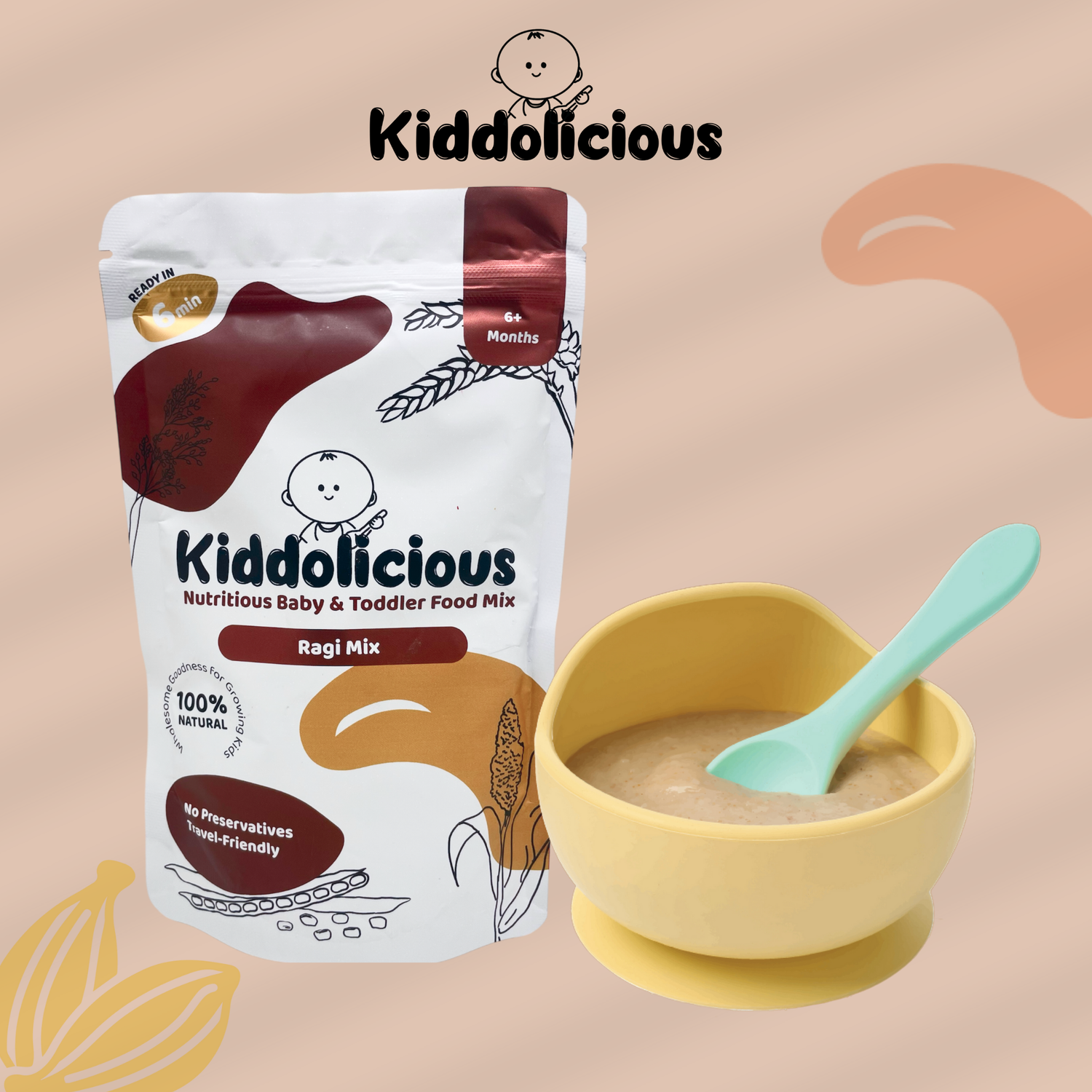
Top 10 Mistakes Parents Make with Baby Food
Did you know? In India, only about 9.6% of infants aged 6–23 months receive a minimum acceptable diet, meaning they receive the right quantity, frequency, and variety of complementary foods, which is well below the global average of 18%.
That gap impacts growth, immunity, and even future physical and mental development.
As a parent, this can feel overwhelming: juggling worries about nutrient balance, texture transitions, allergies, hygiene and fussy feeding. And, with all the conflicting advice you read online, get from your friends, and old wives' tales, you are eventually bound to stumble on some missteps that may disorient your baby’s diet.
Let’s break down the most common stumbling blocks, what parents often get wrong, and how to fix them confidently.
Top Mistakes Parents Make with Baby Food
1. Starting solids too early
- Too early (< 6 months): Baby’s gut isn’t ready, making digestion difficult and increasing choking risk.
- Too late (> 7–8 months): Misses the window for accepting textures and developing oral skills.
- Signs of readiness: Sitting with minimal support, showing interest in food, and reaching toward your plate.
Fix: Begin solids around six months when the baby shows these signs, not before and not much after.
2. Giving up too quickly on new foods
- Refusal, spitting out food, or funny faces don’t necessarily mean “no.”
- Babies may need 10–15 tries before accepting new tastes or textures.
- The tongue-thrust and gag reflex fade by around seven months.
Fix: Offer the rejected food again after a pause. Repeat without pressure; eventually, familiarity leads to acceptance.
3. Sticking with purees too long
- Purees are helpful at first but don’t help with chewing or self-feeding skills.
- By 8 months, babies start chewing; introduce soft lumps and finger foods gradually.
Fix: Blend texture progression, smooth purees → mashed/grouped pieces → soft finger foods over weeks or months.
4. Skipping a family table learning model
- Babies benefit by watching family mealtimes, mimicking chewing, timing, and table rhythm.
- Eating alone reduces exposure and learning opportunities.
Fix: Invite baby to the table, offer softened versions of family meals, and let them watch, explore, and try what you eat.
5. Serving too much or too little
- Large plates can intimidate; too-small servings might limit variety and nutrients.
- Often, 1–2 teaspoons per meal is enough to begin, not overflowing bowls.
Fix: Offer small amounts. Let baby lead; you offer, and they decide the quantity. Fill up gradually as they show interest.
6. Relying too much on jarred/packaged products
- Studies show nearly one-third of commercial baby foods are ultra-processed with added sugars and low nutrients.
- Frequent use may encourage sugar cravings or poor eating habits later.
Fix: Cook fresh, home-based meals. Use packaged foods only occasionally or in emergencies.
7. Using sugary liquids or adding cereal to milk
- Combining cereal or grains into formula or breastmilk can reduce nutrient absorption and confuse calorie intake.
- Babies may consume too much or become less open to new textures.
Fix: Serve solids separately via spoon-feeding; let breastmilk or formula remain primary until year one.
8. Neglecting safety and hand hygiene
- Bacteria like Cronobacter or Salmonella can thrive in leftover foods and dirty utensils.
- Unsafe heating habits, like microwaving directly in jars, cause hot spots.
Fix: Wash hands, prep surfaces, and sterilize utensils when needed. Transfer food to clean bowls before reheating and test the temperature.
9. Introducing textures too quickly or never
- Too slow: Delays chewing and self-feeding skills.
- Too fast: May trigger gag or refusal, can discourage future attempts.
Fix: Gradually evolve food textures: smooth → lumpy → small bite-size. Aim for this shift between 6 and 9 months, depending on the baby’s cues.
10. Forcing food or offering rewards to eat
- Pressuring or using dessert as a reward distorts hunger cues and encourages emotional eating habits.
- Most parents pressure-feed unknowingly: “Just two more bites” or finishing the plate.
Fix: Use the “division of responsibility”: parents decide what, when, and where; the baby decides whether and how much.
Simple Fixes for Happy Baby Meal Time
|
Mistake |
Better Habit |
|
Starting solids too early/late |
Introduce when the baby shows readiness around 6 months |
|
Giving up on new foods |
Try repeated, calm exposure |
|
Sticking with purees |
Shift to soft lumps/finger foods around 7–8 months |
|
Feeding separately |
Include the baby at the family table for modeling and connection |
|
Over or under-serving |
Offer a few small parts; let the baby guide more |
|
Jar-based meals |
Cook fresh; limit sugary or processed options |
|
Mixing cereal in milk |
Serve solids separately; respect natural milk timing |
|
Poor hygiene |
Maintain hand/utensil cleanliness and proper storage |
|
Texture mismatch |
Progress textures mindfully, puree to crumble to finger food |
|
Coercive feeding |
Encourage self-feeding; avoid pressure or rewards |
Feeding is considered more than just adding nutrition to your baby’s meal. Feeding develops connection, nurtures growth, and cultivates curiosity towards food. Avoiding the mistakes highlighted in this blog can give our baby a strong foundation for taste and self-regulation.
What you must remember is that every spill, every funny face and every trial during your baby’s mealtime is their journey towards good health and a strong metabolism.
At Kiddolicious, we support this path by encouraging mindful, nutrient-dense and sensitive approaches to baby feeding.
Whether you're beginning complementary feeding or refining your baby's weaning routine, Kiddolicious supports wholesome baby nutrition the way nature intended.
Ready to avoid these baby food mistakes and make mealtimes joyful again?
👉 Explore our range of porridge mixes today — and feed your baby right, from the first bite.
